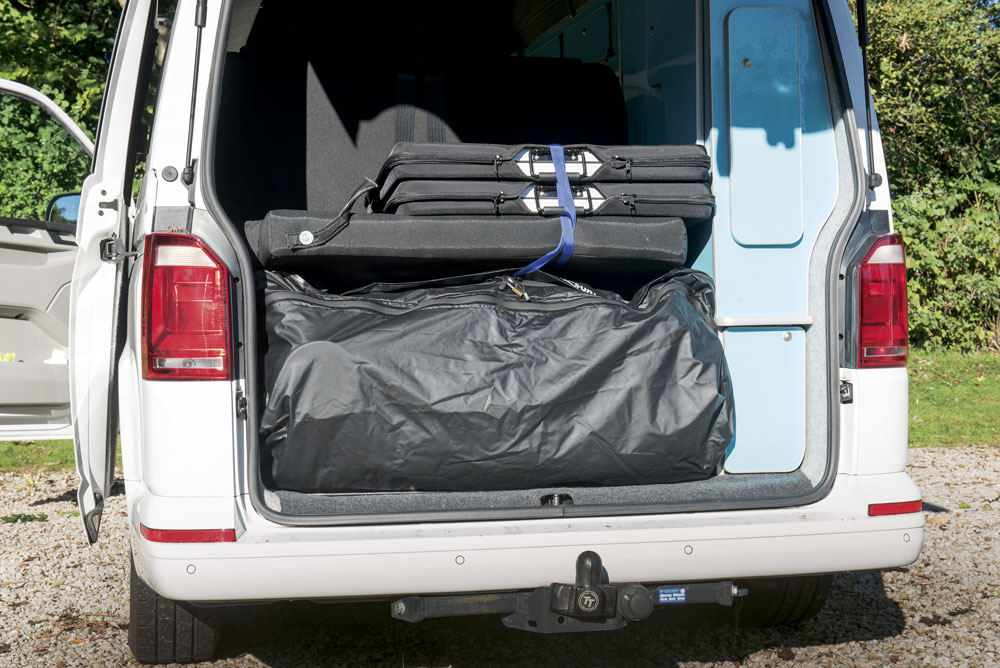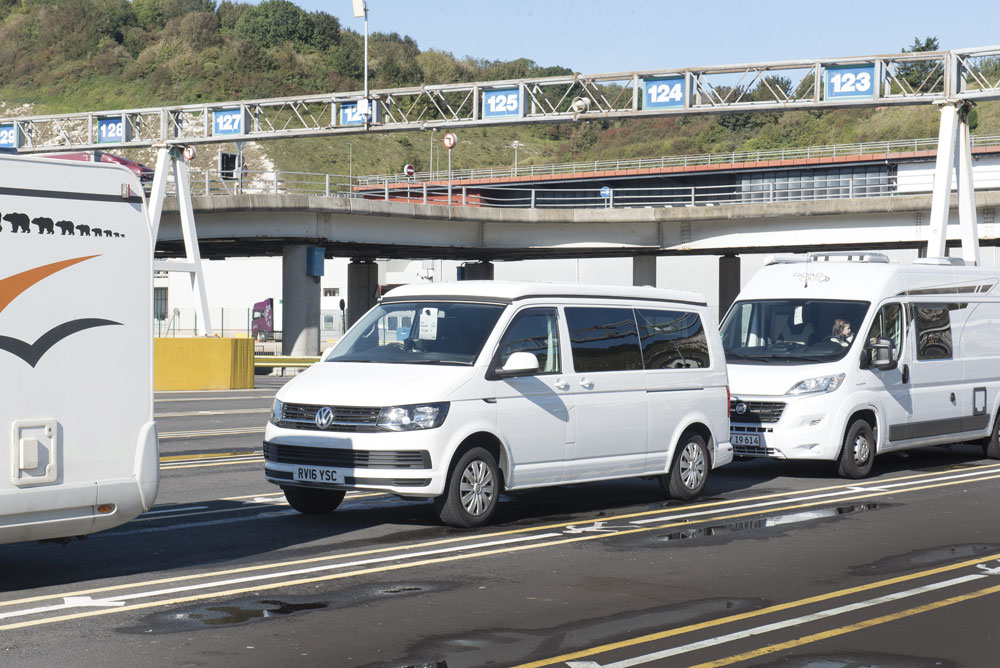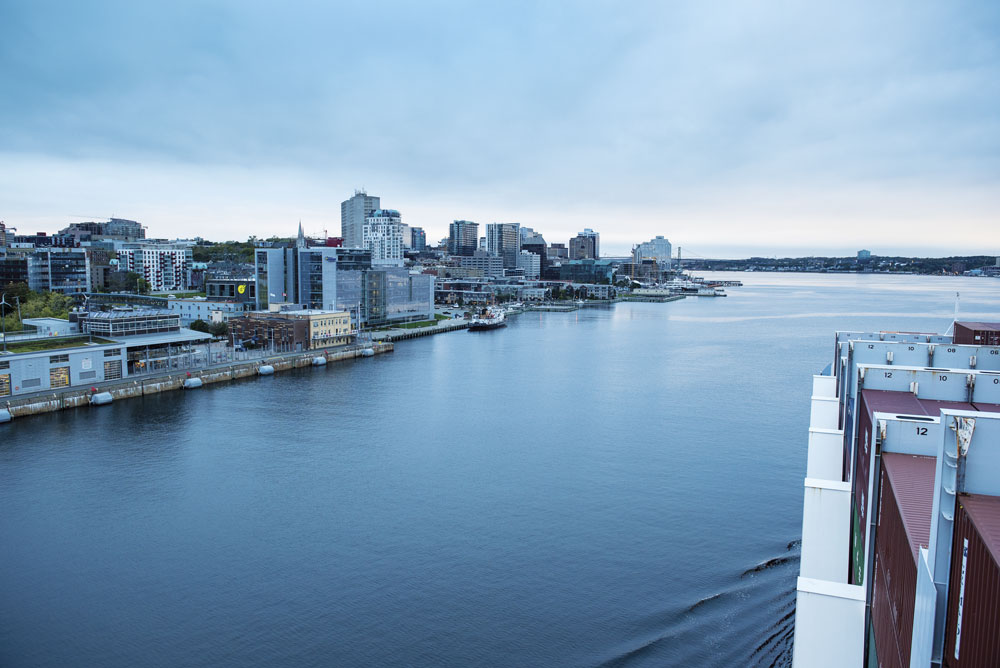How to ship a campervan to the USA
See also: Campervan: Travel and Destination Guide
Words and photos by Mike Waterman
With the launch of a new shipping service last summer, I decided to take my campervan across the Atlantic for a year-long tour of the US and Canada. After the expense of shipping, I wanted to spend more than the standard 90 days in the USA. Canada allows six months at the point of entry but, to be able to stay for six months in the US, a B-2 Tourist Visa is required.
The effort required to get it was not insignificant. There’s a detailed online application, followed by an interview at the US Embassy in London. The Americans wanted to be convinced that I could afford to be in their country and have overriding reasons to leave after my trip.
The next step in the chain involved the US Environmental Protection Agency (EPA). A foreign vehicle won’t comply with the requirements of the EPA. However, it’s possible to apply for permission to temporarily import such a vehicle as a non-resident, solely for personal use, for a period of up to a year.
The application process is both easy and free. I sent an email detailing the facts about myself, the vehicle and the trip, together with proof of ownership (a copy of the UK registration) and proof of non-residency (copy of passport) to the EPA in Michigan.
After three weeks, I got the letter of permission. Arriving in the US by a land border, the EPA letter is often not requested, but if you’re arriving by sea it’s a must-have.
Covering the campervan essentials

In North America the mains electricity is 110V at 60Hz, while we have 220V at 50Hz. Most modern appliances function on 50 or 60 current cycles. To solve the 110V issue when hooked into mains power, I purchased a step-up converter. This comes with a US-style plug input and a UK three-pin socket output. I bought a short European lead, cutting off the female blue plug and around three metres of cable. To the end of this cable I fixed a UK three-pin plug, to attach the converter to the campervan.
When in use the converter lives in a plastic box underneath the campervan. My first purchase in the US was an extension lead to link the campsite supply to the converter.
My budget dictated that I needed to camp off-grid as much as I was able. Water and food is just a matter of space, but boosting the existing 65W solar panel on the roof took more work. My solution is totally portable, with two 100W folding solar panels hooked up to a Ring 30A charger. It connects via Anderson connectors to permanent wiring attached to the twin 88Ah leisure batteries.
Insurance and shipping

Finding an American insurer to cover a non-resident driving a foreign registration vehicle can be done for a price. Thum Insurance will quote. Only dealing with motorhomes and campervans, it requires photographic evidence the vehicle has two of the following requirements – a built-in kitchen, bed and/or a toilet. The other provider is Progressive; much more competitive, but you’ll need to borrow a US address from a friend or relative.
The shipping service is provided by Grimaldi, now allowing a small number of passengers to travel on the same ship. The service is roll-on roll-off so, unlike shipping using a container, there are no size constraints. This is a commercial transporter with just six cabins for passengers, called a freighter cruise. Five ships provide a weekly service from Hamburg, calling into Antwerp and Liverpool, before crossing the Atlantic to Halifax in Canada, followed by Baltimore and finally Virginia.
I left from Antwerp and disembarked in Halifax, with 11 nights on board. I booked via Seabridge in Düsseldorf, which specialises in shipping motorhomes around the world and is happy to provide everything in English. A considerable advantage of this route is the ability to take personal gear in the vehicle. The vehicle need not be empty, but should appear empty, so all gear must be stored away in cupboards, etc. Oddly, when shipping a vehicle to Canada or the US, it must be clean. Around 2% of vehicles are contested.
In Antwerp, it was a two-day, three-stage process to get the campervan and me on board. My campervan needed to be delivered to the Grimaldi quay the day before the ship docked. In the reception, I completed a delivery note and was given a sticker and a security tag. I drove 100 metres to the port entrance and used the tag to get through the first barrier to the security staff.
Having checked my delivery note, they pasted the sticker to a side window, told me where to park and advised me to take my key and the delivery note – now sporting some extra stamps – back to reception. It was all sorted within an hour.
Reporting to Belgium immigration the next day only took five minutes and I received a document stating I was leaving the country on the ship Atlantic Sun. This can only be completed once the ship is alongside. After a taxi back to the Grimaldi quay, I walked up the ship’s loading ramp and was greeted by a crew member. I was introduced to the captain, shown where meals would be served and taken to my cabin. This had two single beds, en-suite shower room and desk.
My voyage was for a one-year road trip; however, the other nine passengers had varied reasons. A French family had sold up and were headed to Mexico in search of a new life. A Swiss couple had quit their jobs for an open-ended cycling tour.
The price for a cabin is the same from any of the three European ports. It is, however, more expensive to travel to the US rather than get off at Halifax. Passengers share the crew facilities. There is a lounge, a laundry and a small gym and sauna. The crew had even set up a basketball court on a lower deck! Three daily meals are included, a set menu served at a set time. The ship’s working language is English and all the crew were very happy to chat.
The Halifax end went very smoothly. Arriving at breakfast, two Canadian border staff interviewed us all individually before granting entry. Exiting from the vehicle ramp in the stern we were driven through the dock by port staff to the security office. There the guards telephoned for taxis and we all headed our separate ways.
The next day I was at the freight forwarder’s office just after it opened. I paid C$150 (about £90) and collected the documents I needed to request customs clearance. At the customs office I found my campervan had been cleared, although I was required to wait at the office while it was looked over. My documents were stamped and then it was back to the port to retrieve my transport. I was required to check the campervan over, sign there was no new damage and I was free to drive out and commence my trip.
Taking a British campervan to North America is a feasible undertaking. Doing it by the freighter cruising option adds just an extra element of adventure...

What was spent shipping a campervan to the USA
Visa fee: £128
Voltage conversion
3,000W step-up voltage converter: £282
Orange lead and UK plug: £13
Storage box: £13
US extension lead 20A 100ft: £28
Solar charging panel
2 x 100W folding solar panels: £380
Ring controller and charger: £170
Cable and fittings: £25
Costs to arrive in North America
Cabin: Single use for two: £932
Shipping: VW Transporter LWB: £1,391
Marine insurance (optional): 0.9% of value
Freight forwarder charge: £91
Travel insurance - 12 months: £748
Vehicle insurance for US and Canada - 12 months: £1,258
Total: £5,459
This trip took place prior to the coronavirus pandemic. We are publishing it for your enjoyment and to help you plan your future trips. Read the latest camping travel advice here.
Expert Campervan advice to your door!
Campervan is the exciting monthly magazine that will give you all the inspiration you need to explore the world in your campervan. Every issue is packed with real-life campervanning experiences, inspiring travel ideas in the UK and further afield, the best campsites to stay on, campervan road tests and reviews of the latest models, and much more!
Want to know more about Campervan Magazine?








Recent Updates
Engine management lights: all you need to know
What is the engine management light? What does it mean, and what do I have to do? ...
Motorhome air suspension: all you need to know
Motorhomes are heavy and the additional weight of equipment and height of the bodywork can increase the loads ...
Motorhome WiFi: how to get better motorhome internet
Staying connected on the move is more and more essential, so relying on campsite WiFi isn't an option – here ...
A class of their own - our guide to A-class motorhomes
Thinking of trading up to an A-class, or even going straight to the top of the motorhome tree? We guide you ...
Explore overseas on a motorhome dream tour
Enjoy exotic travel in a campervan or motorhome by hiring, swapping with someone else or exporting your ...
Motorhome water systems: everything you need to know
On-board water is an important part of every motorhome – here’s everything you need to know ...
Campervanning in Europe: what you need to know
Whether you're planning a leisurely drive through the French countryside, navigating bustling city streets in ...
Campervan security: all you need to know
With thefts on the increase, it’s important to know how to keep your campervan secure and prevent campervan ...
Campervan furniture: everything you need to know
Our campervan experts guide you through all the essentials for your campervan, including tables, chairs, ...
Campervan finance: how to fund your purchase
Here we look at the different types of campervan finance available, to help you decide what’s the best option ...
Other Articles
Britain’s best used motorhomes
Want a great motorhome without paying the premium for a new one? Here's a guide to the best you can get in the pre-owned market for each layout, ...
Which motorhome? Choosing the perfect motorhome for you
Choosing a motorhome or campervan is one of the biggest buying decisions you’ll ever make, so it's important ...
Campervan washroom essentials: stay fresh on the road
Our guide will take you through the campervan washroom essentials you'll need so you're well-prepared for ...
Dogs in campervans: all you need to know
Follow our advice and your dog will enjoy campervanning as much as you do ...
Electric campervans: all you need to know
Our guide will take you through everything you need to know about electric campervans and what the future ...
Motorhome electrics: a complete guide to your motorhome electrical set-up
Motorhome electrics can dramatically enhance the convenience and comfort of your vehicle – but they can be ...
Lighting for campervans: all you need to know
We guide you through all the lighting options available for you and your campervan, including interior ...
Electric bikes for motorhomes: our ultimate guide
Read our comprehensive guide to electric bikes for motorhome owners, helping you add electric power to your ...
Our guide to 'cheap' motorhomes in 2024
If you're on the hunt for an affordable new motorhome, this is the best place to start – we've rounded up a ...
Campervans in winter: all you need to know
Here's your guide to preparing your campervan for the colder months, whether you will be using it or putting ...